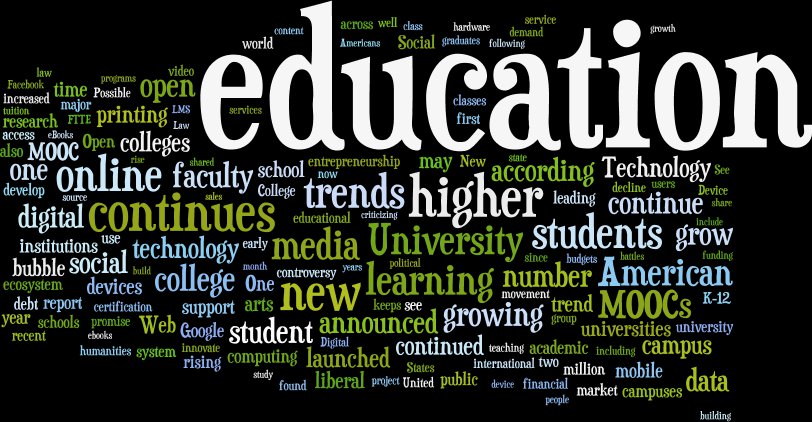 |
| Photo credit BryanAlexander on Flickr |
In all honesty, I was not
very excited when I found out I needed to take the course “Intro to Technology
for Educators”. For some reason, technology and I never seemed to work well
together. I believe it had a lot to do with the fact that I am old fashioned. It
made me anxious/nervous just reading the syllabus and all the technology
oriented assignments I would have to do. After getting to know the professor
through her videos and all her helpful posts, I was able to relax and take it day
by day. I must say now, “this has been the BEST and MOST influential class I have
ever taken!”. I learned many different forms of technology to use inside as well as outside of a
classroom that would allow students to enhance their learning experience. I can
see clearly now how technology gives students the motivation to learn, then if
they were without technology.
The required textbook for this course that we used is called "Transforming Learning with New Technologies" by Robert W. Maloy, Ruth-Ellen Verock-O'Loughlin, Sharon A. Edwards, and Beverly P. Woolf. This has been the first textbook that I enjoyed reading so much. This book helped me understand more about the different teaching methods and how to incorporate various forms of technology into them. Each chapter was simple enough to comprehend with great examples of how to use certain digital tools.
I would never imagine
myself saying this, but I really enjoyed the discussions and different
assignments we did for this class. I have accomplished more than I ever thought
that I would. For instance, we had to set up a blogger and write blogs
throughout the course. I never saw myself as someone who could blog, but I learned
to enjoy it quite a bit. We also had to create a collaborative lesson plan, a WebQuest,
a collaborate Wikipage, and a Teacher Webpage/ePortfolio. Doing these assignments made me
more excited to become a teacher. I believe every learning objective for this
class was hit spot on. Through each of these assignments and discussions, as a
class we were able to learn in great depth the necessary factors of
incorporating technology into classrooms. Allowing students to learn using
digital tools, will help them progress and succeed academically.
As I mentioned before,
this online course is definitely my favorite. Throughout this course, navigation
was very simple from one section to the next. The Professor made
everything understandable and precise. I loved the fact that, we could feel her
passion for teaching and desire for each student to succeed. Professor Coleman
has left a lasting impression on me of what a true teacher should be like and
that is something I will never forget! Everything that I have learned in this
course will be implemented in my future classrooms and I cannot wait to begin!
Resources:
K,K (2014, Feb. 16). Why is technology important in education? Retrieved April 29, 2017, https://www.youtube.com/watch?v=kMi13DoDBAM
Maloy, R., O'Loughlin, R.,
Edwards, S., & Woolf, B. (2013). Transforming Learning with New
Technologies. 2nd Edition. Boston, MA: Pearson Education Inc.

